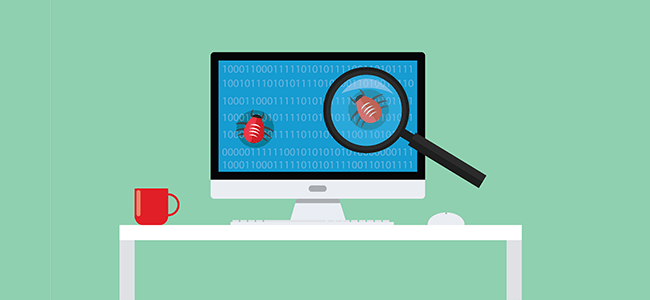
What is a Computer Virus?
A computer virus is a malicious code designed to spread from host to host by itself without the user’s knowledge to perform malicious actions. It imposes harm to a computer by corrupting system files, destroying data or otherwise by being a nuisance. The reason for designing a computer virus is to attack vulnerable systems to gain admin control and steal confidential information — Cybercriminals prey on online users by tricking them.
How does a Computer Virus Spread
A computer virus spreads through removable media, internet downloads, and e-mail attachments. In other words, a virus spreads while the user is viewing an infected advertisement, visiting an infected website, opening the attachment in the email, or clicking on an executable file. Besides that, connecting with an already infected removable storage device such as a USB drive also spreads the infection. (https://ci.lt/)
There are two ways by which a virus operates; the first type starts replicating itself as soon as it lands on the computer; the second type remains dormant until it is triggered. Therefore, it is essential to install robust antivirus software on a computer to steer clear of all such threats.
Types of Computer Virus (Updated 2020)
- Boot Sector Virus
- Direct Action Virus
- Resident Virus
- Multipartite Virus
- Polymorphic Virus
- Overwrite Virus
- Spacefiller Virus
- File Infector Virus
Boot Sector Virus –
The Boot Sector virus infects the master boot record, and it mostly spreads through the removable media. It is a complex task to remove this virus and often requires the system to be formatted.
Direct Action Virus –
The Direct-Action Virus remains dormant on a computer until the file containing the virus is executed.
Resident Virus –
The Resident Virus inserts itself in a computer system’s memory. It is hard to identify the virus, and it is equally tough to remove it.
Multipartite Virus –
The Multipartite Virus infects and spreads in multiple ways. This virus infects both the program files and the system sectors.
Polymorphic Virus –
A Polymorphic Virus is more capable of altering its signature pattern whenever it replicates thereby rendering it hard to be detected.
Overwrite Virus –
As the name suggests, an Overwrite Virus spreads through emails and deletes all the files it infects.
Spacefiller Virus –
The Spacefiller Virus is also known as Cavity Virus; it occupies the empty spaces between the codes. It does not harm the files.
File Infector Virus –
A File Infector Virus is also known as Parasitic Virus because it comes attached to program files, such as .COM or .EXE files. The best way to detect file infector viruses is to use virus detector software.
Computer Virus Symptoms
The list of computer virus symptoms include:
- A slow performing computer
- Pop-ups automatically showing up on the screen
- Programs running on their own
- Automatic multiplying/duplicating files
- Presence of unknown files and applications on the computer
- Files getting deleted or corrupted
When a user comes across any of these symptoms, then there are chances that the computer is virus infected. There are two approaches to erase computer infection. The first approach is do-it-yourself and the second approach is to ask for some help to get rid of the virus.
If you want to do it yourself, install Comodo Antivirus on the computer to remove viruses. The antivirus is designed to protect computers from sophisticated threats too. Here’s a list of things that a user needs to do:
Step 1- Disconnect your computer from the internet
Step 2- Enter Safe Mode – this helps running only the required programs and applications.
Step 3- Delete all temporary files to free up the disk space
Step 4- Run a virus scan
Why Comodo Antivirus software
Comodo Antivirus has real-time protection and threat-detection technology for complete virus protection and removal. The below-mentioned techniques are used to protect your computer:
- Behaviour-based detection
- Signature-based detection
- Sandbox detection
- Heuristic-based detection
- Data mining techniques
Protect your computer from all types of viruses with Comodo Free Antivirus. Download Now
Related Resources:
Remote Desktop Connection Manager
Managed Detection and Response



 (27 votes, 3.78 / 5
(27 votes, 3.78 / 5

